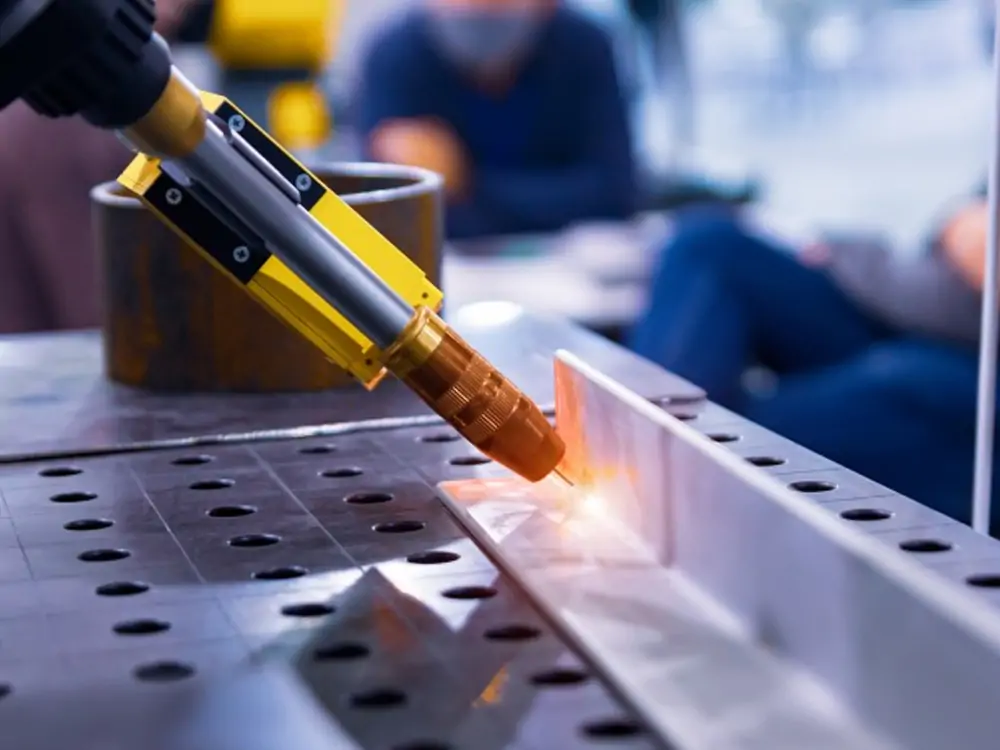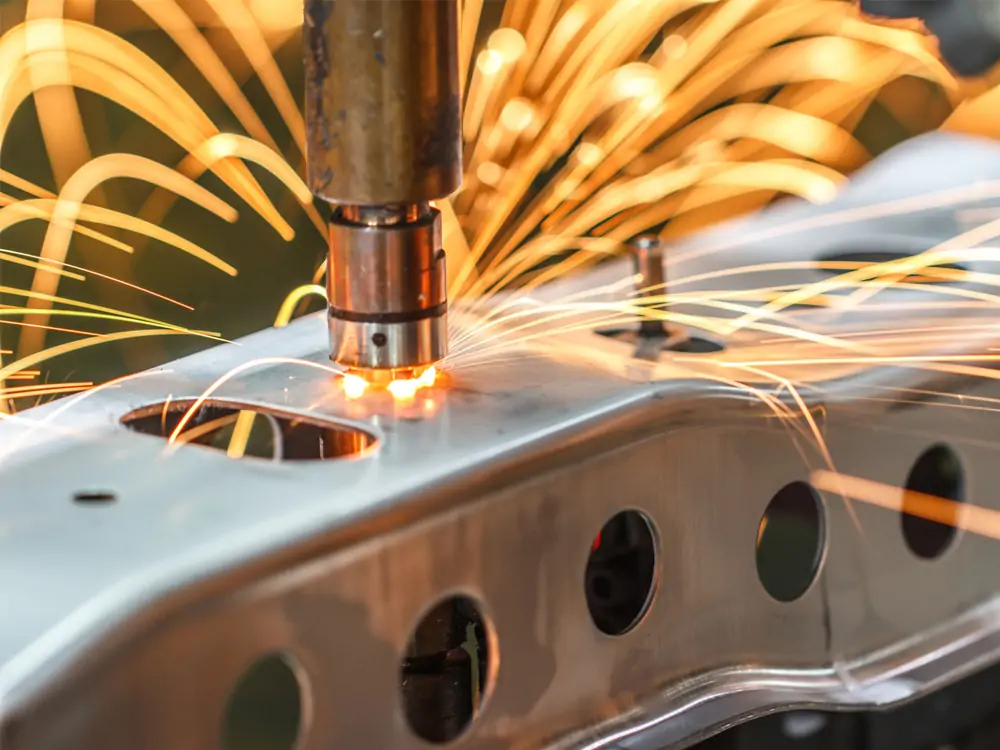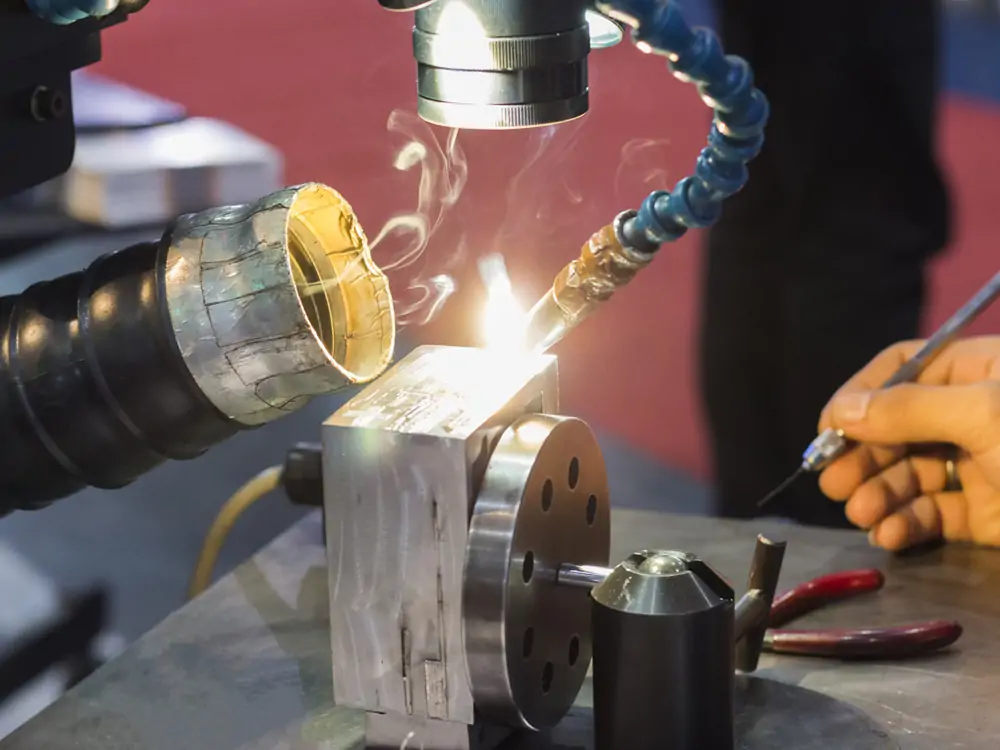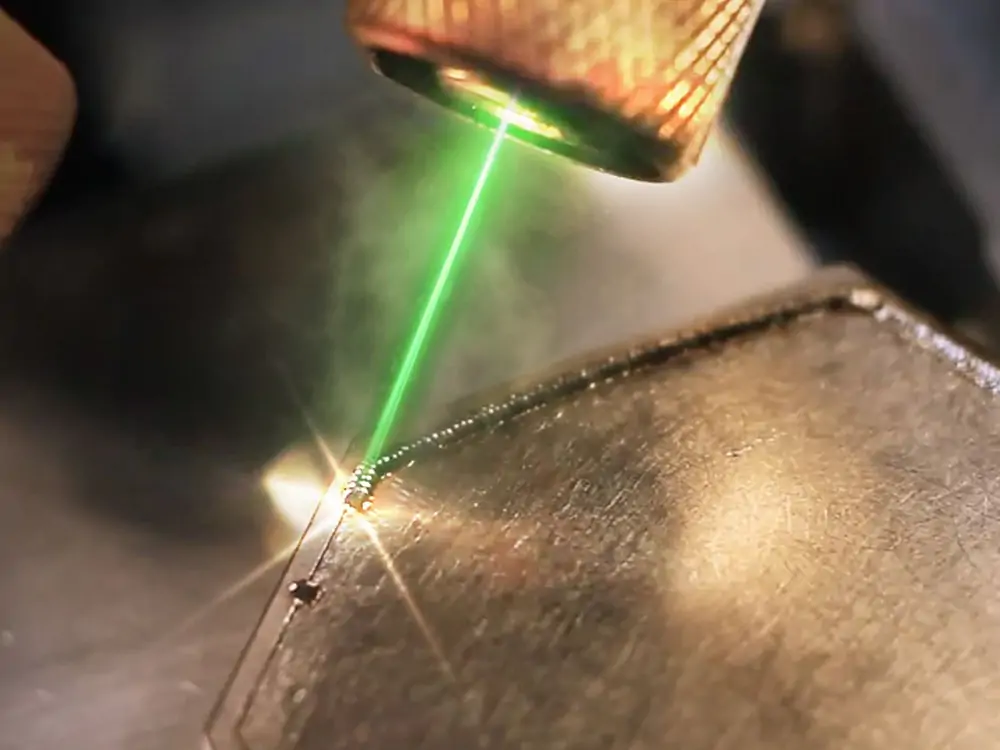Laser welding is a cutting-edge technology that has revolutionized the manufacturing industry. It is an exact and efficient way to join two pieces of metal. It has been used for various applications. These include medical implants, aerospace components, and automotive parts. In this article, we will explore the fascinating science behind laser welding. We will discuss the benefits and limitations of this innovative technology.
What is Laser Welding?
Laser welding is a modern, high-tech manufacturing process that combines two pieces of metal with a focused beam of light. The laser welding process is highly accurate and efficient. It is a popular choice for industrial manufacturing applications.
The laser welding process begins with applying a powerful laser beam to the metal surface. The laser beam is focused on a tiny area, usually no larger than a few millimeters wide. The laser beam must be of a precise intensity and wavelength to achieve optimal welds. The beam is then directed onto the metal surface, melting and fusing the two pieces.
The laser welding process offers several advantages over traditional welding methods. Since the laser beam is so focused, achieving a very tight, precise weld without more preparation is possible. Additionally, the welds created by laser welding are highly consistent and uniform. It results in a high-quality end product.
The laser welding process is also speedy and efficient. The laser beam heats the metal surface quickly, completing the weld in seconds. It is ideal for high-volume production applications where time is of the essence.

Types of Laser Welding
Laser welding is an advanced technique that uses a laser beam to heat the welded material and form a weld. It has been used in various industries for decades. It is a type of welding that has been gaining popularity due to its ability to weld a wide range of materials with precision and accuracy. There are several types of laser welding. Each type has advantages and disadvantages and is used for different applications.
- Gas Laser Welding: It is a type of laser welding that uses a gas-filled tube to generate laser light. This type of laser welding is usually used for welding plastic, metal, and glass. It is also used for welding thin metals and for sealing metal joints. Gas laser welding is fast, efficient, and often chosen for its high-quality welds.
- Solid-state Laser Welding: A type of laser welding that uses a solid-state laser to generate laser light. This type of laser welding is often used for welding metals and joining metal components. It is also used for spot welding, welding thin metal sheets, and welding dissimilar metals. Its high speed and accuracy make it ideal for welding precision components.
- Diode Laser Welding: This type of laser welding uses a diode laser to generate laser light. It is often used for welding various metals such as steel, aluminum, and copper. It is also used for welding plastics and joining metal components. Diode laser welding is fast, efficient, and often chosen for its high-quality welds.
- Pulsed Laser Welding: This type of laser welding uses a pulsed laser to generate laser light. It is often used for welding metals such as steel, aluminum, and copper. It is also used for welding plastics and joining metal components. Its high speed and accuracy make it ideal for welding precision components.
- Continuous Wave Laser Welding: This type of laser welding uses a continuous wave laser to generate laser light. This type of laser welding is often used for welding metals such as steel, aluminum, and copper. It is also used for welding plastics and joining metal components. Its high speed and accuracy make it ideal for welding precision components.
- Hybrid Laser Welding: This type of laser welding uses a combination of laser sources to generate laser light. It is often used for welding various metals such as steel, aluminum, and copper. It is also used for welding plastics and joining metal components. Hybrid laser welding is fast, efficient, and often chosen for its high-quality welds.

Benefits of Laser Welding
- Accuracy: Laser welding is an exact process allowing laser welders to join pieces of metal with the highest accuracy. It is beneficial for welding components that need tight tolerances.
- Low Heat Input: Laser welding produces a localized heat input, which minimizes the impact on the surrounding material. It allows for a more controlled welding environment.
- Low Distortion: The localized heat input also reduces the amount of distortion in the welded area. It is beneficial for applications that require a high degree of accuracy.
- Speed: Laser welding is a fast process, allowing welders to complete a job in a fraction of the time compared to traditional welding methods.
- Clean Welds: Laser welding produces a high-quality, clean weld that requires minimal post-weld cleanup. It is beneficial for applications that require a higher degree of finish quality.
- Cost Savings: Laser welding offers savings over traditional welding methods due to its speed and accuracy. These benefits applications need a high degree of accuracy and a lower cost.
Limitations of Laser Welding
- High Cost: Laser welding equipment is expensive and requires significant maintenance and upkeep. The cost of laser welders is usually significantly higher than traditional welding equipment. It is difficult to justify the cost of laser welding for applications that need only a small amount of welding.
- Limited Materials: Laser welding is best suited for metals, but some plastics and other materials can be welded with a laser. However, the range of materials that can be used with laser welding is limited, and not all materials may be suitable.
- Heat Sensitivity: Laser welding uses high heat to join materials, which can cause heat-sensitive materials to deform or melt. It can make welding certain materials, such as thin metals and plastics, difficult.
- Thickness Limitations: Laser welding can weld materials of varying thicknesses. However, the welds are most effective when the materials are of similar thickness. The weld may be weaker when welding materials of differing thicknesses.
- Complexity: Laser welding requires excellent skill and precision to perform correctly. It can make it difficult for inexperienced welders to use the technique effectively.

How Does Laser Welding Work
Laser welding is a cutting-edge technology that has revolutionized how metal is joined together. It is a precise and powerful process that creates high-quality welds with a minimal heat-affected zone (HAZ). Laser welding uses a focused beam of light to heat and melt the metal, which is joined together to form a strong weld. Here is how laser welding works.
The laser welding process begins with the laser being focused on the workpiece. It is typically done with a focusing lens and mirror system. The laser beam is then directed onto the joint that needs to be welded. The metal then absorbs the laser beam, heating it to the melting point. The laser beam creates a narrow, deep weld joint between the two pieces of metal.
The key to the success of laser welding is its accuracy and control. The laser beam is only heated to the melting point of the metal and no further. It prevents the metal from becoming too hot and deforming. The narrow weld joint that the laser creates also reduces the heat-affected zone (HAZ). It is the area of metal that is softened by the heat of the welding process.
The speed of laser welding is also a significant advantage. Laser welding is much faster than traditional welding processes, allowing for shorter production times and increased efficiency. The laser beam can also be focused on tiny areas and welded precisely. It makes laser welding ideal for detailed work that requires intricate welds.
Laser welding is more environmentally friendly than other welding processes. Since the laser beam does not generate a flame, there is no risk of releasing toxic fumes or other hazardous materials into the air. It makes laser welding a safer option for workers in the welding industry.
Uses of Laser Welding
Laser welding is used in a variety of applications, such as:
- Automotive: Laser welding produces automotive components. Such as exhaust systems, fuel tanks, and transmission parts.
- Aerospace: Laser welding produces aircraft parts like turbine blades, fuselage, and rocket components.
- Medical: Laser welding produces medical devices. Such as surgical instruments, implantable devices, and dental tools.
- Electronics: Laser welding produces components such as circuit boards, sensors, connectors, and microelectronics.
- Jewelry: Laser welding produces high-end jewelry, particularly in repairing and welding precious metals.
- Tool And Die: Laser welding is used to repair and maintain the device and die components in manufacturing processes.
Military and defense: Laser welding produces military and security equipment. Such as tanks, missiles, and weapons systems.

Conclusion
Laser welding is a unique process. It combines the power of light and the precision of technology to join materials together. The heat generated melts and fuses the materials by focusing a high-intensity laser beam onto the target area to create a strong and seamless bond.
This process offers numerous benefits over traditional welding methods. These include faster welding speeds, higher quality welds, and greater flexibility in materials and shapes. As technology advances with continued development and refinement, laser welding will become even more efficient. It has been widely used in various industries, from aerospace to automotive to medical.
